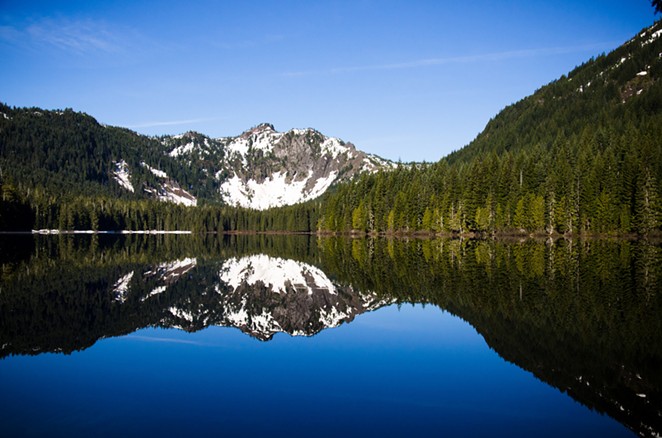Overcrowding and overuse are issues that National Forest officials have been working to mitigate for years—and today, they issued the plan they hope will curb overcrowding and overuse on some of the most popular trails.

sfrancisball, Flickr
The Elk Lake trailhead will have a quota of 24 day-use permits under the Draft Decision announced today.
Some areas included have seen exponential increases in use in recent years. A release issued today stated that supervisors believe the plan will "sustain recreational use and ensure wilderness character is protected for future generations."
Beginning in spring 2020, visitors would need to obtain permits for those 30 trailheads when they visit from the Friday before Memorial Day through Sept. 30 each year.
While not yet official, the Draft Decision states that those trailheads would require permits and have day-use quotas—meaning there would be a cap on the number of permits issued each day. Right now, each group entering an area requiring a self-issue permit creates just one permit for the group.
In the Three Sisters Wilderness, quotas would be in place at Lucky Lake (quota of 30), Elk Lake (quota 24), Six Lakes (quota 60), Todd Lake (quota 12), Green Lake/Soda Creek (quota 80), Devils Lake/Wickiup (quota 100), Broken Top (quota 40), Tam MacArthur Rim (quota 80) and Black Crater (quota 24), among others. The Forest Service has outlined overnight group quotas in each of the affected areas, as well.
Visitors would be able to reserve some permits in advance—though some day-of permits would also be available.
The Forest Service's Draft Decision states: "For those trailheads that will have limited entry, it is our commitment to allow for a proportion of permits/use to be reserved in advance and the remainder to be available on the day or day before a trip starts; for day use, the majority of permits will be available shortly before the trip starts." Thus far, officials have not announced the cost of permits.

Wikimedia
Black Crater would have a day-use permit quota of 24 permits under the plan announced today.
Oregon Wild's Erik Fernandez told the Source Thursday that the plan should be a reminder to Oregon's Congressional delegation that the state needs more protected wilderness areas.
"Oregon has less protected Wilderness than all neighboring states and that's where people like to hike," Fernandez said. "No one likes hiking through clear cuts. Senator's Wyden, Merkley, and Walden should interpret this as a prime reason to protect more Wilderness areas in Oregon."
Only 4 percent of Oregon is protected as wilderness, Fernandez said, compared to 15 percent in California, 10 percent in Washington and 9 percent in Idaho.
While the cost of permits has yet to be determined, Fernandez says that's a crucial aspect of the process.
"From an equity standpoint, this is something we'll be watching very closely. We will oppose a price that makes it more difficult for Oregonians of all backgrounds and income brackets to participate in," he said.
Other user groups also weighed in Thursday.
“Many equestrian trail riders are concerned that the soaring popularity of our wilderness trails is having a detrimental effect on the wilderness experience. While not everyone agrees a permit system is the right answer, most of us believe that steps need to be taken to limit the damage," said Kim McCarrel, spokeswoman for Oregon Equestrian Trails in the Deschutes NF's Thursday release.
"...As community members raising families in Bend, we’re heartened by the Forest Service’s efforts to ensure future growth and associated wilderness use will be managed with both user experience and wilderness health in mind," stated Kevney Dugan of Visit Bend, the organization tasked with promoting Bend. "The Forest Service’s move to help preserve our wilderness areas is aligned with shifts Visit Bend has made in recent years to support a more sustainable model for enjoying Bend’s outdoor spaces.”
Members of the public have a chance to file objections over the next 45 days. Forest Supervisors will issue a final decision in February, and the plan will go into place in spring 2020.







